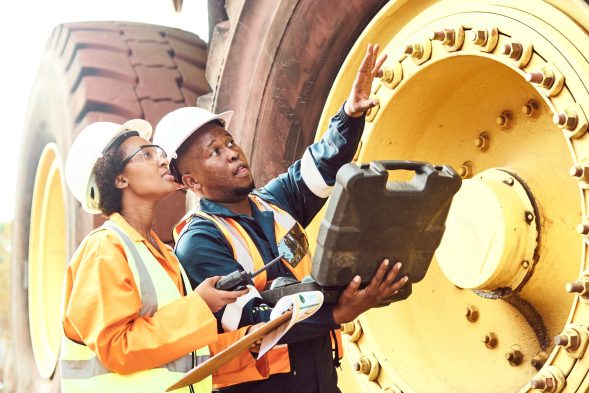Safety First: Best Practices for Heavy Hauling Operations
Introduction to Heavy Hauling Safety
Heavy hauling, the transportation of oversized and overweight cargo, is a vital industry that keeps construction projects running, delivers essential equipment, and supports various sectors of the economy. However, these loads’ immense size and weight present unique safety challenges. Implementing a robust safety program is paramount for protecting personnel, preventing property damage, and ensuring the smooth flow of operations.
Importance of Safety in Heavy Hauling
Safety is not merely a formality in heavy hauling; it’s the cornerstone of a successful operation. Here’s why:
- Reduced Accidents and Injuries: Accidents involving heavy hauls can be catastrophic, causing severe injuries or fatalities to drivers, workers, and bystanders. A strong safety program minimizes these risks.
- Protection of Equipment and Cargo: Heavy equipment and oversized cargo are expensive investments. Proper safety protocols prevent damage during transport, saving companies significant costs.
- Improved Operational Efficiency: Accidents and breakdowns lead to delays and disruptions. Prioritizing safety fosters a smooth-running operation, ensuring timely deliveries and efficient project completion.
- Enhanced Public Confidence: The public relies on the safe transportation of heavy cargo. By prioritizing safety, hauling companies build trust with communities and demonstrate their commitment to responsible practices.
Common Risks and Challenges
Several inherent risks come with heavy hauling:
- Shifting Loads: Improperly secured cargo can shift during transit, causing the vehicle to lose control or tip over.
- Oversized Loads: Large loads can obstruct visibility, limit maneuvering capabilities, and create challenges navigating bridges, tunnels, and tight corners.
- Equipment Failure: Mechanical breakdowns of the hauling vehicle or malfunctioning lifting and securing equipment can lead to accidents.
- Traffic Safety: Large vehicles require increased stopping distances and wider turning radiuses, which can make interacting with regular traffic challenging.
- Unforeseen Obstacles: Adverse weather conditions, road hazards, or unexpected delays can increase the complexity of the transport.
Planning and Preparation
Conducting Risk Assessments
A comprehensive risk assessment identifies potential hazards associated with a specific haul. This includes analyzing the load size and weight, route conditions, weather forecasts, and equipment capabilities. Proactive identification allows for the development of control measures to address each risk.
Route Planning and Permits
It is crucial to plan the route meticulously. Factors like bridge clearances, road capacity, potential obstacles, and traffic patterns must be considered. Obtaining permits for oversized and overweight loads is essential to ensure compliance with regulations.
Equipment and Vehicle Safety
Regular Inspections and Maintenance
Regular inspections of the hauling vehicle, lifting equipment, and securement materials are mandatory. These inspections identify potential issues like worn tires, faulty brakes, or damaged chains before they become safety hazards. Routine maintenance ensures the equipment functions optimally.
Choosing the Right Equipment for the Load
Matching the hauling vehicle and equipment to the specific load is vital. The vehicle’s capacity, trailer type, and lifting equipment must be suitable for the cargo’s weight, dimensions, and center of gravity. Using the right equipment can lead to overloading or stability.For exceptionally heavy or large loads that sit low to the ground, utilizing lowboy transportation services can be the key to safe and efficient delivery. These trailers are specifically designed to haul heavy construction machinery or other bulky items. Ensuring you have access to the appropriate lowboy trailer options can prevent overloading and maintain stability throughout the transport process.
Load Securing and Management
Best Practices for Loading and Unloading
Following established procedures for loading and unloading is essential. This includes using designated loading zones, ensuring equipment is properly secured before transport, and carefully maneuvering the load onto and off the trailer.
Securing Techniques and Materials
Utilizing the proper securing techniques and materials is crucial. This may involve chains, straps, binders, and dunnage (wedges to fill gaps and prevent load movement). Proper securing methods ensure the load remains stable throughout the journey.
On the Road: Safety Protocols
Adhering to Traffic Regulations
Heavy haul vehicles are subject to specific traffic regulations regarding speed, lane usage, and signage requirements. Drivers must be familiar with these regulations and adhere to them strictly.
Handling Emergencies and Breakdowns
Planning for emergencies and breakdowns minimizes risks. This includes having a communication plan, carrying an emergency kit, and knowing how to pull over safely. Drivers should also be trained to respond to potential load shifts or equipment malfunctions.
Conclusion
The Impact of Safety on Operational Success
Prioritizing safety is not just about preventing accidents; it’s an investment in operational success. A safe operation minimizes downtime, reduces costs associated with accidents and repairs, and fosters a positive company culture. This translates to increased efficiency, improved reputation, and a competitive advantage in the industry.





Leave a Reply